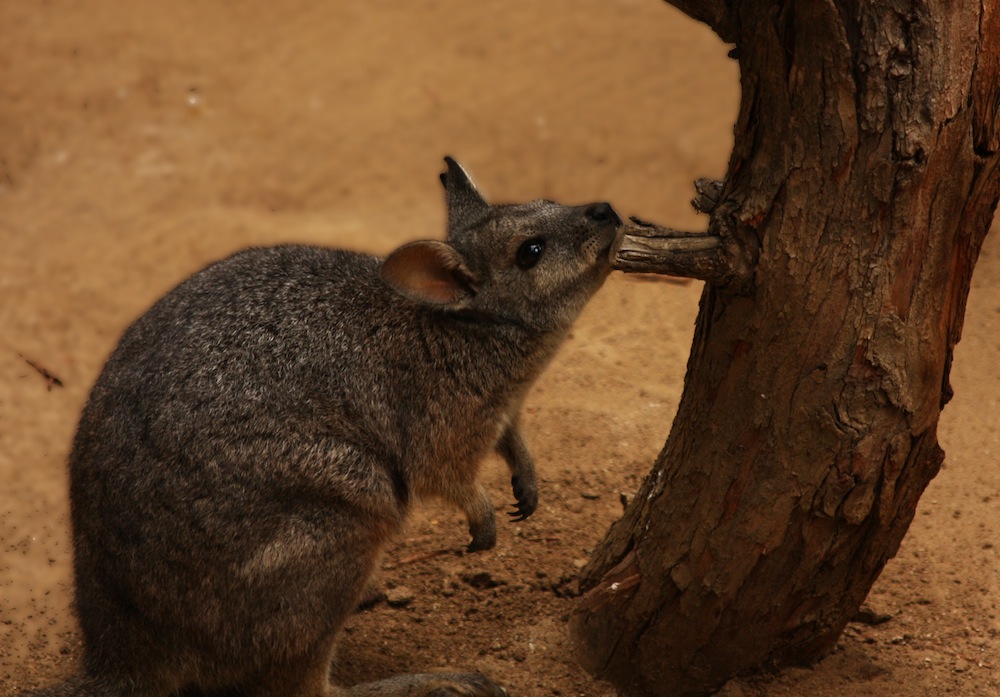Ruminant Relief: Wallaby Gut Bugs Could Cut Livestock Flatulence

To cut down on gassy emissions from livestock, scientists propose feeding them bugs found in the belly of a small marsupial.
New carbohydrate-digesting bacteria isolated from the intestines of the Tammar Wallaby, a small marsupial that looks like a miniature kangaroo, seems to produce less of the greenhouse gas methane than the bacteria that ruminant livestock animals, such as sheep and cows use to digest carbohydrates (like the sugars, starches and fiber that come from their plant-based diets).
(It's these bacteria that break down carbohydrates into a form that's easy for the animal to absorb, but ultimately release gassy methane, and other byproducts.)
"Kangaroos and wallabies, when fed the same plants as sheep or cattle, make less methane gas for every pound of feed digested as these ruminants do," said study researcher Mark Morrison, of Ohio State University and the University of Queensland, in Australia. "We were interested in looking at what enzymes were involved in breaking down these carbohydrates [from the feed]."
Gassy guts
Gassy animals account for a significant portion of greenhouse gas emissions, specifically methane, which can warm the atmosphere and has been linked to climate change.
But the farts and belches of some marsupials seem to be less potent: The wallaby and kangaroo emit about one-fifth of the methane that traditional livestock animals do, though they aren't able to digest fiber as well. The two classes of animals have slightly different digestive organs, but they also seem to have different bacteria that live in their guts.
Sign up for the Live Science daily newsletter now
Get the world’s most fascinating discoveries delivered straight to your inbox.
To figure out the difference, the researchers sequenced the genes of bacteria collected from the wallaby gut. They used this information to design a special food to grow the bacteria on, so they could study them in the lab. They discovered that these bacteria produced much less methane than their counterparts isolated from cows or sheep, even when fed the same food.
Because they produced fewer byproducts, these bacteria are more efficient in digesting plant material, resulting in more nutrients and energy that the animals can use to grow and reproduce.
Bacteria transplant?
"What we are really trying to achieve here is a reduction in methane emissions form livestock for two reasons; one the gas is a waste for the animal. Potentially in a different form, it would help the animal grow more efficiently," Morrison told LiveScience. "Also, any contributions that could be made to reduce the methane release in ruminants would have some beneficial effects in the industry, in their dealings with the environment."
The researchers hope to combine this bacterial knowledge with other efforts to decrease methane emissions from livestock, perhaps by reducing the methane-producing bacteria (possibly by using a drug that kills them) in ruminants and replacing them with this wallaby microbe. The differences in the digestive system between the two animals might make the swap difficult.
Ruminant researcher Alexander Hristov, at Pennsylvania State University, has doubts that we will be able to tinker with the digestive microbes in these species.
"None of the efforts to introduce a foreign organism in the rumen has worked yet — they simply cannot compete with the native rumen microbes for substrate," Hristov, who wasn't involved in this latest research, told LiveScience in an email. "There are many examples of failed attempts in the literature. Millions years of evolution is something that is very hard to overcome."
You can follow LiveScience staff writer Jennifer Welsh on Twitter @microbelover. Follow LiveScience for the latest in science news and discoveries on Twitter @livescience and on Facebook.
Jennifer Welsh is a Connecticut-based science writer and editor and a regular contributor to Live Science. She also has several years of bench work in cancer research and anti-viral drug discovery under her belt. She has previously written for Science News, VerywellHealth, The Scientist, Discover Magazine, WIRED Science, and Business Insider.










